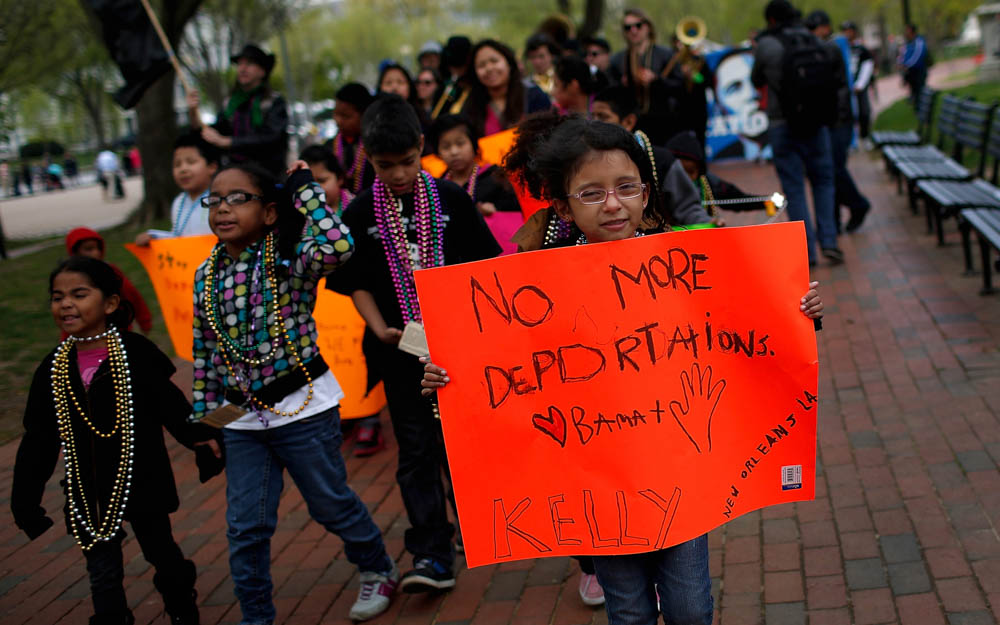Immigration is a situation, not a problem. After all, the very nature of immigration means that people’s lives are in a mixed state of present stress and hope for a better future.
Questions of identity weave in and out of the topic. Immigrants have to leave the patriotic pride of their former home and their own personal history, to navigate what being American now means to them. This piece will focus on the corollary matter of what it means to join a new society as a child. Personal growth is accompanied by times of immense stress, all a part of the immigrant’s long journey.
At the top of the list is the economic issue. The financial implications of immigration can veer into complex aspects at a rapid pace. For adults the role of work is crucial to social life. Put another way, new jobs are not created as quickly as new members join the grand American family. The current citizen worries about losing work, faced with competition from the new citizen needing to find work.
Also important are national security topics, which arise from the influx of immigrants crossing the borders and putting stress on previously balanced law enforcement ratios. Avoiding the implication that immigrants are more dangerous than current citizens, there are still concerns that any time you overload the capacity of the police force to maintain the safety equilibrium, difficulties will occur.
Immigrant families indeed present the full range of matters to attend to. However, out of the spotlight, a twist on the theme emerges when families send their children alone!
Generally, a working adult’s economic safety is not challenged when a child arrives to the country. Similarly, the initiatives to curb employment of illegal immigrants also do not apply to children. The same reasoning goes for the national security angle — children are not a significant risk factor. So from these and other examples, the issue of isolated children being sent to America alone should be treated separately from other immigrant initiatives. The considerations involving children are many and deep, but they are of a slower nature, providing time to navigate the issues, hopefully in a reasoned and level manner.
The economic perspective of the effects of lonely immigrant children shifts from employment and security to the costs of caring for the children. Typically children are transferred to and among different institutions with varying levels of support capacity available, including schooling. This is where the economic principle of finite resources appears, as the adults involved attempt to provide complete care for their children.
Decisions begin to be made, at the micro level of each individual child in tandem with the structural resources available, with varying levels of distress, desperation, and ingenuity. This is the intense level when each of the many aspects already mentioned conflict with each other, with certain sets of partial components of solutions proving impossible to provide together. Our country looks to national policy to provide guidance on how to solve some of these resource conflicts.
Of central importance to children anywhere is education. Democrats and Republicans differ in opinion about how best to allocate and administer education funds and resources. Those details are not important here. At the broader level, the tension comes from the definition of a citizen as someone who is fully entitled to all the benefits of being an American. So when illegal immigrants enter the country, there simply is a new person arriving who will partake of those services, while not having been granted the full rights to receive them.
Returning to our focus on children, investments in all aspects of education funding are now being spread across more children than planned, strained by the newcomers who also have not fully been granted rights to receive these benefits. Another way to state this is that each party’s proposals can be analyzed by the amount of spending in a particular area, divided by the number of children intended to be served. So when a surging influx of new children arrive, those ratios change unfavorably.
However, after all the downside cost increases are worked through, it is important to balance that out with the subtle benefits. According to the White House website, immigrants boost demand for local consumer goods. From the perspective of caring for immigrant children, this means boosts in both childcare goods and private childcare services.
Immigrant children and youths, who become adult citizens, are still people who have just changed countries and are missing some of the normal support structures of their former family life. They then join the discussion with their new American identity. And through it all, some of those people will succeed to great heights — as the troubling technicalities of their childhoods fade away, leaving only their contributions to America.
We still need to find ways to develop the legal immigration process with a special focus on the vulnerability of children. Assistance must be sought to handle the administrative issues normally performed by immigrating adults.
As noted on the White House website, President Obama said on July 4, 2012, ‘”The lesson of these 236 years is clear – immigration makes America stronger. Immigration makes us more prosperous. And immigration positions America to lead in the 21st century.”

